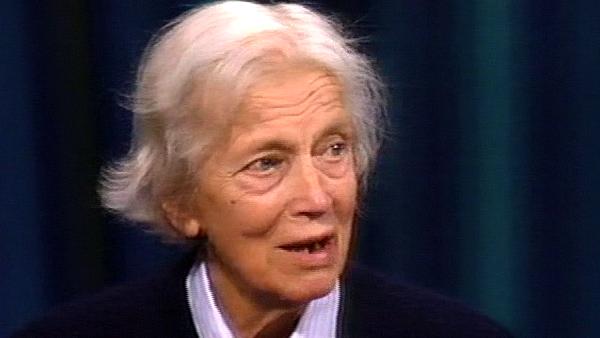NEXT STORY

Computing solutions for the structure of penicillin
RELATED STORIES

NEXT STORY

Computing solutions for the structure of penicillin
RELATED STORIES



|
Views | Duration | |
|---|---|---|---|
| 21. Working on cholesterol | 133 | 04:41 | |
| 22. Determining the chemical structure of penicillin | 159 | 06:39 | |
| 23. Work on penicillin | 97 | 03:34 | |
| 24. Crystallising penicillin | 84 | 04:25 | |
| 25. Photographing potassium, rubidium and sodium salts | 55 | 04:26 | |
| 26. Mapping the molecular structure of penicillin | 100 | 06:38 | |
| 27. Correlating the work on penicillin | 59 | 02:18 | |
| 28. Computing solutions for the structure of penicillin | 73 | 04:29 | |
| 29. My molecular model of penicillin | 94 | 03:27 | |
| 30. Visiting America | 109 | 02:12 |


When we had reached this position, we believed the solution, and we went... I went up to London to a meeting with, it occurred, I think it occurred on the same day as the election, because Robinson said to me just before the meeting, 'Oh, of course, you'll be needed at the election, won't you? You won't be at that meeting in London?' I said, 'Oh no, I can vote before the first train goes to London', and after that he was quite pleased and went around telling everybody that, of course, they must come to the penicillin meeting, because the first train... you could vote before the first train left Oxford.
This was because we had these organisations to correlate the work done on penicillin. As soon as the first work started in Oxford, we were organised by the Ministry of Supplies. So all the observations we made were written up briefly and circulated to each other. And when Americans came in, and wanted of course to be an important part of the work, then a wider organisation was set up, pulling in the big America pharmaceutical companies, Merck and Squibb and the rest of it, and the same circulation of information took place all the time. And those things that were written then are really what were used to write up the...
[Q] Different papers?
Different papers, yes.
British pioneer of X-ray crystallography, Dorothy Hodgkin (1910-1994), is best known for her ground-breaking discovery of the structures of penicillin, insulin and vitamin B12. At age 18, she started studying chemistry at Somerville College, Oxford, then one of the University of Oxford colleges for women only. She also studied at the University of Cambridge under John Desmond Bernal, where she became aware of the potential of X-ray crystallography to determine the structure of proteins. Together with Sydney Brenner, Jack Dunitz, Leslie Orgel, and Beryl Oughton, she was one of the first people in April 1953 to see the model of the structure of DNA, constructed by Francis Crick and James Watson. She was awarded the 1964 Nobel Prize in Chemistry and is also known for her peace work with organisations such as Science for Peace and the Medical Aid Committee for Vietnam. All recorded material copyright of The Biochemical Society.
Title: Correlating the work on penicillin
Listeners: Guy Dodson
Guy Dodson studied chemistry and physical science at the University of New Zealand, followed by a PhD on the crystallographic study of an alkaloid. In 1961, he came to Oxford to work on the crystal structure of insulin. In the mid 1970s Guy and his wife moved to York University to establish a laboratory. In addition to insulin studies the laboratory has investigated many complex molecules of medical significance, including haemoglobin, myoglobin, HIV related proteins, proteases and proteins involved in managing nucleic acids in cells. In 1993, he went to the NIMR in London to establish a crystallographic group in an environment that spanned molecular, physiological and disease-related disciplines. Here his research began on some cell signalling proteins. His interests on medically relevant proteins included prions, malarial and TB proteins, and some clinically relevant thrombin inhibitors. Guy Dodson retired in 2004 but is still finding much to do in York and the NIMR.
Tags: Ministry of Supplies
Duration: 2 minutes, 18 seconds
Date story recorded: 1990
Date story went live: 02 October 2009